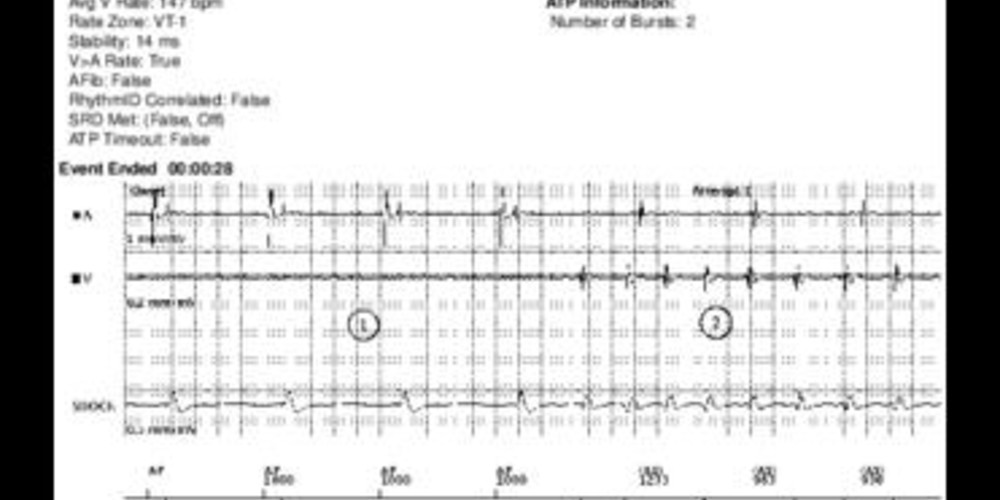Dual chamber discrimination: V>A
Tracing
Manufacturer Boston Scientific
Device ICD
Field Discrimination
N° 3
Patient
This 65-year-old man underwent implantation of a Teligen dual chamber defibrillator for primary prevention, in the context of ischemic cardiomyopathy. He was seen for a routine ambulatory visit.
Summary
Episode of VT requiring a burst of ATP. The initial detection was based on the discrimination by the Rhythm ID algorithm. The rhythm was considered stable, with no concordance between the vectors during the tachycardia and the reference vector. V rate > A rate implies a diagnosis of VT.

Graph and trace
Tracing
- atrial and ventricular paced rhythm (AP-VP);
- sudden onset of regular tachycardia with AV dissociation (a greater number of ventricular than atrial events confirms the ventricular origin of the arrhythmia);
- 8 out of 10 criterion was fulfilled (V-Epsd);
- rhythm considered stable (Stb) with greater number of ventricular than atrial events (V>A): diagnosis of VT (V-Detect);
- burst of ATP;
- unsuccessful burst and persistence of the arrhythmia;
- second burst of ATP;
- termination of the arrhythmia.
Other articles that may be of interest to you







A dual chamber defibrillator enables a comparison of the atrial rate and ventricular rate during tachycardia. For the physician and for the defibrillator, a ventricular rhythm faster than the atrial rhythm confirms the ventricular origin of the tachycardia. The V > A criterion can be associated with the Rhythm ID algorithm. This criterion pre-empts all associated discrimination criteria. Hence, if V>A is true, it surpasses all other programmed discriminators and VT is diagnosed. This function analyses and compares the average of the last 10 ventricular cycles with that of the last 10 atrial cycles before the end of the Duration. If the average ventricular rate is >10 bpm faster than the average atrial rate, the criterion is fulfilled and the treatment can be delivered. Otherwise, the decision to treat hinges on the other programmed discrimination criteria. In this patient the difference between the atrial (65 bpm) and ventricular (147 bpm) rates was evident, confirming the diagnosis of VT.